The answer is No. The chances of “pleco fish survive in cold water” is far less than you thought. They only can withstand 60°F (15°C~) for a short period of time.
Pleco Fish are commonly known as algae eaters originating in the rivers of the Amazon Jungle in South America, specifically the Amazon River Basin.
In addition these fishes attached themselves to a hard surface with specially adapted mouthparts. Pleco Fish are scavengers and will eat anything. They are highly recommended for beginning aquarists.
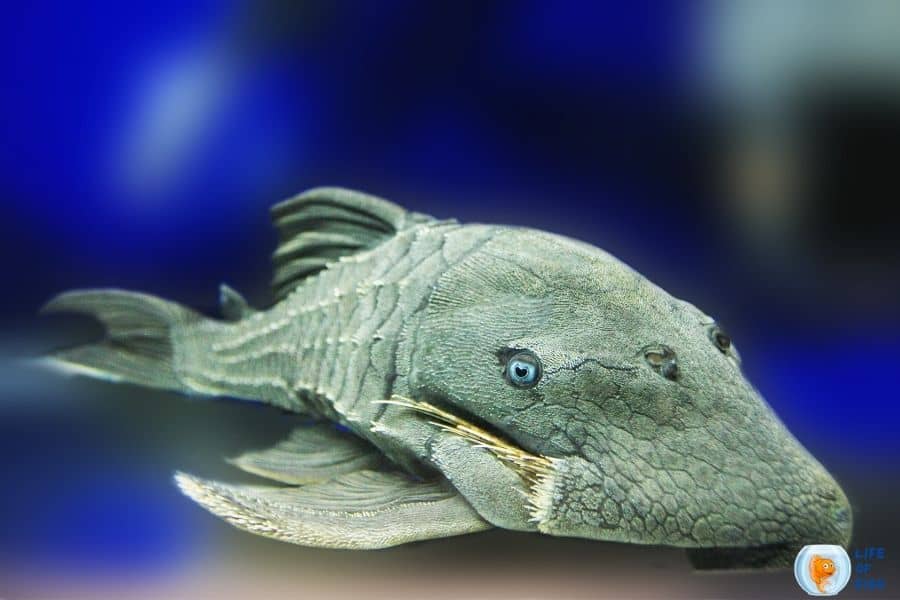
What is the ideal temperature for pleco Fish?
Jump To
- 1 What is the ideal temperature for pleco Fish?
- 2 Lowest temperature pleco Fish can survive?
- 3 Will pleco Fish die if the water is too cold?
- 4 How to control the temperature in an aquarium?
- 5 How to keep your aquarium warm during power cuts?
- 6 Natural Habitat of pleco Fish
- 7 Which fish can survive in cold water?
- 8 various Pleco fish survive in cold water
- 9 Related questions
- 10 Conclusion
Pleco Fish is mainly a tropical species hailing originally from the freshwater streams and rivers.
Pleco Fish are generally suited to more mild waters. If kept outdoors, plecos do best in low to semi-tropical regions.
However these species will do just fine in low-temperature areas, provided they are not kept outdoors over the winter seasons.
Many plecos tolerate waters ranging from 65 to 85 degrees Fahrenheit (18-30°C), Even though these species prefer temperatures between 75 and 82°F (24-28°C).
Some pleco fish types might even withstand some colder waters.
Lowest temperature pleco Fish can survive?
Generally a typical pleco fish is considered a flexible species for temperatures ranging from 72 to 86°F (22 to 30°C).
Pleco Fish can withstand temperatures into the mid to low 60’s (15°C~), provided it is not for an extensive period.
Any temperature below the mentioned amounts, the Pelco Fish might start to develop health issues, become inactive, may float up to the surface, and could eventually die if the low temperature continues.
Overall, Pleco fish should not be left outdoors in winter seasons or if you are living in a colder region.
Above all to help the Plecos survive winters, you can use a pond heater or bring them indoors, provided it is large enough to accommodate this hefty species.
Ensure that not to stress the fish when capturing it to move it. However the lower temperatures will make these fish sick.
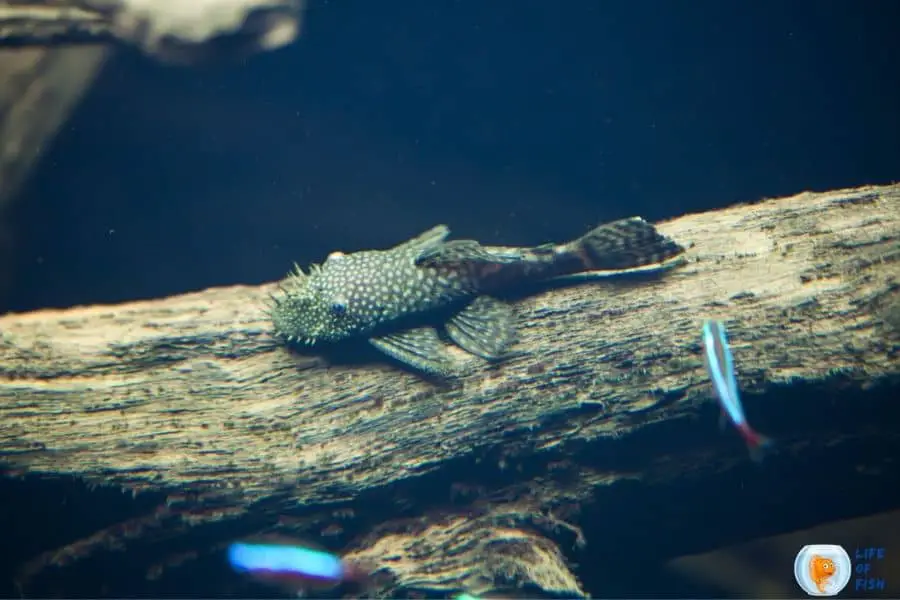
Will pleco Fish die if the water is too cold?
Yes, Even though these species can tolerate temperatures ranging from 65 to 85 degrees Fahrenheit (18-30°C), much below these mentioned temperatures, Pleco Fish will develop serious health issues that might even kill your Pleco Fish.
How to control the temperature in an aquarium?
Here are a few things you can do to prevent your aquarium from overheating or cool down.
- First you can use an aerator to increase the gas exchange on the surface and to increase the oxygen content in the water
- In addition, you can open up the cover of your aquarium and use a fan to blow across the surface of the water. ( try to lower the water levels in your aquarium when trying this to prevent fish from jumping out.)
- Also you can use a bag filled with ice cubes and float the bag over the water’s surface to lower the water temperature. Make sure that the water temperature is not lower than 2 or 3 degrees F in 4 hours. ( Do not put ice cubes directly into the water unless you make the cubes using RO or dechlorinated water. )
- Further, conduct partial water changes with slightly cooler water, making sure not to drop the temperatures of your aquarium too rapidly.
- Also you can Turn your heater down in your aquarium without switching it off. Some aquatic experts suggest unplugging the water heater, but when doing this, the risk is that the ambient temperatures are suddenly dropping and forgetting to plug it back in. For instance the sudden drop in the aquarium temperature can trigger the onset of ich or other parasites.
- Turning off the aquarium light or if your aquarium has a lot of aquatic plantation reduces the light’s hours to help reduce the light-generating from the light source.
- However if you have placed your aquarium near a window or any place where direct sunlight gets contacted, you might want to consider repositioning your aquarium someplace else.
- Further you can fix a chiller to your tank in a well-ventilated area. This will ensure that your aquarium’s water has a consistent temperature no matter how hot the weather gets.
Notes: Make sure to make any temperature changes in your aquarium gradually.
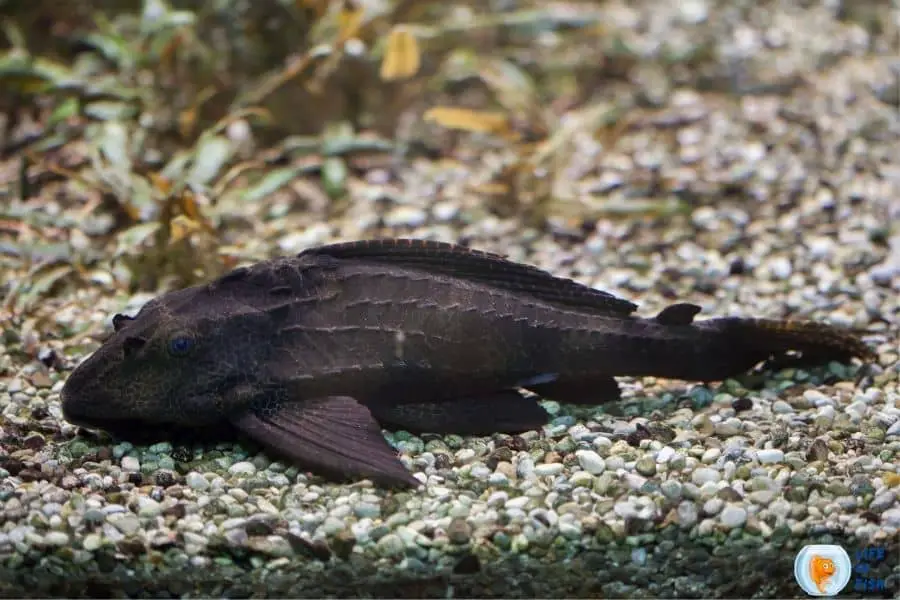
How to keep your aquarium warm during power cuts?
In case of a power cut, your aquarium water levels will begin to fall towards room temperature.
Many species of fish can tolerate a gradual rise or lower in the water temperature over 24 hours.
Even though the fish may behave a bit differently or be sluggish, they should make a full recovery.
Above all In the wild, changes as such happen many times, and only delicate species might get affected. The speed at which the aquarium water gets cooler can be affected by;
- The surrounding air temperature.
- You must look into the Aquarium size and number of gallons held inside. For example, a larger volume of water takes a long time to cool down than a small amount of water.
Natural Habitat of pleco Fish
Generally Pleco fish lives in fresh or brackish water. You can find these species in the rivers of Costa Rica, Panama, and South America.
However the water levels where the plecos live depend upon the rainfall the region gets. Since the river beds dry up in different seasons, These species have adapted to survive in very small water bodies.
One adaptation is the pleco fish can breathe through its skin. These fish can wriggle on dry land from one water body to another in search of more favorable conditions.
Therefore a Pelco fish can stay outside of water for 30 hours if they store enough oxygen in their bellies.
Further, this is why you can sometimes see these species gulping air at the water’s surface. When it comes to breeding plecos, they breed in deep burrows in the muddy river bed, laying around 300 eggs at a time.
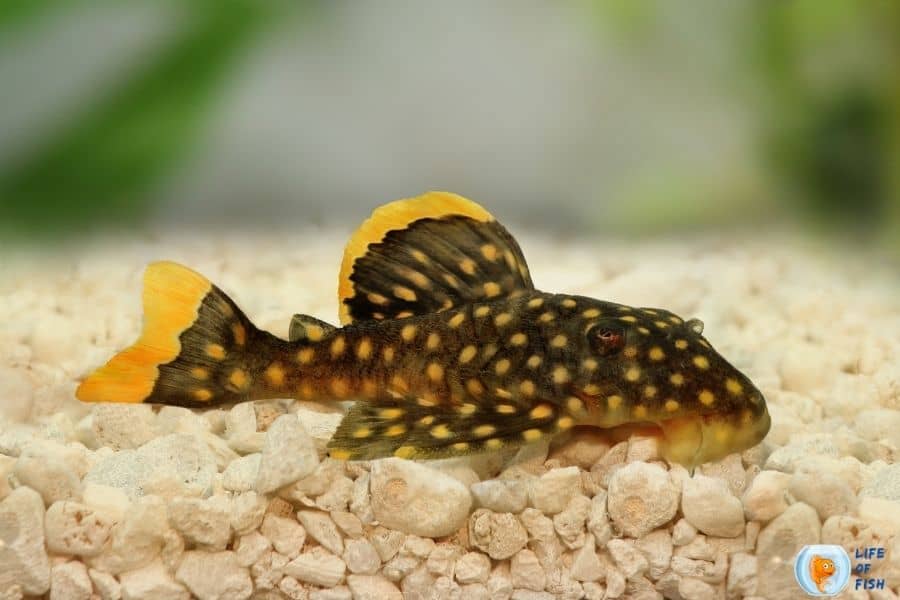
Which fish can survive in cold water?
Many other exciting fish species do not require a heated aquarium. All temperature zones across the continents have fish that prefer cold water.
In addition most of these coldwater fish often grow very big and are primarily suitable for outdoor ponds.
Therefore if you plan to start a cold water aquarium indoors, it’s better to find some fishes that grow small or medium in size. Below we have listed some of the coldwater species that you might be interested in.
Rosy Barb
Originally from Afghanistan and Bangladesh, these little fish can tolerate temperatures of mid – 60 (Fahrenheit) or even lower.
Further rosy Barb is very easy to care for and is suitable for community aquariums. These beautiful fish will grow up to 6 inches in length.
In addition rosy Barbs has an iridescent pinkish color and large scales with saturated red fins at the base and bluish-edged fins.
Gold Barb
Generally known as a gold barb or Chinese barb is a trendy cold water aquatic pet. Any aquarium that has these species should maintain a moderate current.
However a dedicated river tank is unnecessary. It would be best if you provide some flow from a powerhead. in addition these beautiful fish grow up to 2 to 3 inches in length and have bright shiny golden yellow bodies.
Two spot Barb
Originally from Nepal, India, and Pakistan. These two spot barbs are omnivorous. The dark spots and the brightness of the red lateral color change with the quality of its varied diet.
These fish will grow up to 2 to 6 inches and has a silvery body with one dark black spot near the head and one near the tail, and the dorsal fin looks reddish with black spots
Bloodfin Tetra
Originating from Southern Brazil and Paraguay, These species can tolerate temperatures as low as mid 60.
These peaceful omnivores are easy to care for and are pretty hardy. These species are active surface dwellers. Bloodfin Tetra fish can grow up to 2 to 3 inches and have a long silvery body with red-colored fins.
Buenos Aires Tetra
These Species are easily found for sale and will tolerate temperature into the mid 60. Choose between standard varieties and the albino variants.
These species are very easy to care for. They are suitable for a community tank but will voraciously eat live plants.
These fish will grow up to 2 to 3 inches in length and looks more like a silvery fish with a back of olive and brown.
Anal, abdominal, and dorsal fins are yellowish to reddish and have a dark diamond-shaped spot near the tail fin.
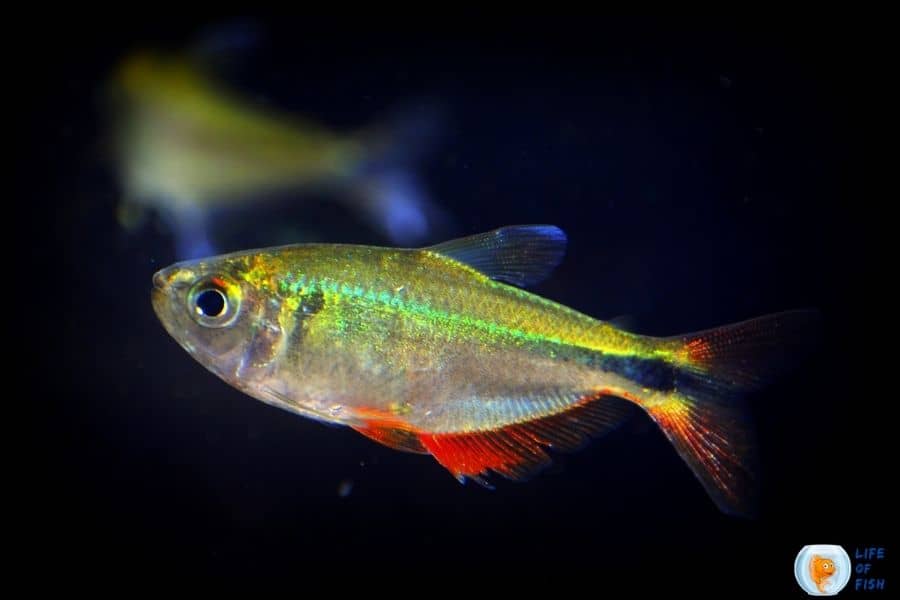
various Pleco fish survive in cold water
| Pleco Fish Types | Temperature |
| Zebra Plecostomus | Between 77 – 86 Degrees Fahrenheit |
| Bristlenose Plecostomus | Between 73 – 80 Degrees Fahrenheit ( 23 – 27 Degrees Celsius) |
| Golden Nugget Plecostomus | Between 75 – 85 Degrees Fahrenheit |
| Clown Plecostomus | Between 73 – 82 Degrees Fahrenheit ( 23 – 28 Degrees Celsius) |
| Snowball Plecostomus | Between 72 – 86 Degrees Fahrenheit ( 22 – 30 Degrees Celsius) |
| Sailfin Plecostomus | Between 74 – 80 Degrees Fahrenheit |
| Royal Plecostomus | Between 72 – 78 Degrees Fahrenheit |
| Leopard Frog Plecostomus | Between 75 – 86 Degrees Fahrenheit ( 23.9 – 30 Degrees Celsius) |
| Orange Spot Plecostomus | Between 77 – 84 Degrees Fahrenheit ( 25 – 29 Degrees Celsius) |
| Common Plecostomus | Between 65 – 85 Degrees Fahrenheit ( 18 – 30 Degrees Celsius) |
| Peppermint Plecostomus | Between 80 – 84 Degrees Fahrenheit ( 26 – 29 Degrees Celsius) |
| Rubber Lipped Plecostomus | Between 70 – 78 Degrees Fahrenheit |
Related questions
Can pleco fish survive without a heater?
No, All tropical fish, including Plecostomus, require a heater. These species are not cold water fish. Even if they were, it would be good to attach a heater to your aquarium to make sure that the water temperature won’t drop too far.
Do pleco fish like cold water?
Depends upon the temperature, most of these species can tolerate temperatures ranging from 65 to 85 degrees Fahrenheit (18-30°C), Although they prefer temperatures between 75 – 82°F (24-28°C). But, they don’t like cold water as their immunity drops when the temperature lowers than their preferred level.
What type of water do plecos live in?
In the wild, These fish live in fresh and brackish waters and likes fast following streams and rivers
In an aquarium, the water parameters have to be as mentioned below;
- Water Temperature: 75-80 Degrees
- Ammonia: 0
- Nitrates:< 20 ppm
- Nitrites: 0
These species are relatively hardy fishes. However, you must never add a pleco to a new tank until it’s fully cycled. Further, we advise you to test the water and keep an eye on your water parameters frequently.
Will a pleco survive in a pond?
Yes, certain types of plecos can be kept in ponds. For example, a Chinese algae eater is a good choice for a pond. These species are herbivores by nature and live along with both Koi and goldfish in ponds, or you can use a common pleco as well in a pond.
Conclusion
When getting a pleco, make sure to research which species of plecos suits you the best because these species can differ in size and appearance.
It would be best if you were aware of all its requirements. Many people would release these fish into the wild once there are fully grown because of their size.
However, unless you’re living in South America, it is advised not to release them to the wild as they are invasive species outside South America.
Many plecos tolerate waters ranging from 65 to 85 degrees Fahrenheit (18-30°C), Even though these species prefer temperatures between 75 and 82°F (24-28°C).
Some pleco fish types might even withstand some colder waters.
Overall, these species are very easy to take care of and are decorative to your aquarium, and will eliminate most algae problems as they feed on algae.
Even if you are an expert or a beginner, this aquatic petting plecos is a highly recommended fish.
Read Next: Can Koi Fish Survive In Cold Water? | Lesser Known Facts About Koi Fish|
